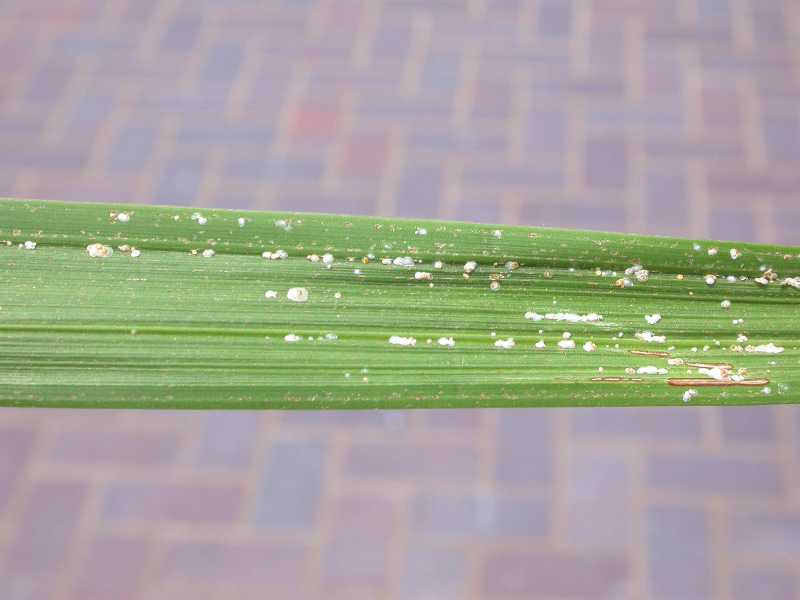 |
Scale (Hemiptera) on frond of kentia palm (Howia) |
Scale insects are small, piercing-sucking insects that often go unnoticed on indoor plants. The adult forms can be attached to leaves, petioles, and stems. They suck plant juices and can cause plants to lose vigor.
Symptoms and Diagnosis
Since the insects are often overlooked, the first signs may be yellowing or wilting leaves that may eventually drop. Leaves may also be covered with a clear sticky substance called honeydew. Honeydew is the insects’ excrement consisting of partially digested sap and may coat the floor and other objects beneath the plant as it spatters down from above. A sticky floor beneath a susceptible plant is a telltale sign that infestation is underway. Under humid conditions, a black mold, called sooty mold, may grow on the honeydew making the leaves look dirty. Closer inspection will reveal small cottony or dome-shaped shells attached to stems and leaves. When pried off with a knifepoint, they may be hollow underneath or house adults and/or eggs. Scale can be differentiated from parts of the plant by scraping. If the structure is green when scraped or cannot be pried off, it is more than likely part of the plant.
Life Cycle
Scale insects have a simple life cycle of egg, nymph (crawler), and adult. Indoors, eggs can be laid any time under the protective shell. The eggs hatch and the crawlers seek out new feeding sites. This crawler stage is when scale is easiest to control. When the crawlers settle, they insert their mouth parts into the plant and begin feeding on the plant's sap. The protective shell develops soon after feeding begins and the insect loses use of its legs. Indoor scales can go through many generations a year.
Integrated Pest Management Strategies
1. Remove insects by hand. If caught early, scale insects can be rubbed off by hand, with a discarded toothbrush, or with a cotton swab soaked in isopropyl alcohol. Prune out heavily infested portions of the plant.
2. Use insecticidal soap. Monitor plants frequently. When crawlers are noticed, use insecticidal soaps that are formulated to kill insects and not damage plants. Frequent sprays may be needed until the problem is under control.
3. Use superior horticultural oil sprays. Highly refined oils sold as superior or ultra-refined horticultural oils are effective in controlling both adults and scale crawlers. The oil suffocates the insects. Unlike dormant oils, these oils are highly refined and under proper conditions, can be applied to plants in foliage without damage. Follow label directions to avoid damage to certain plants that may be sensitive. Superior oils are also considered nontoxic and are less likely to harm beneficial insects. When spraying indoors, protect surfaces that may be damaged by an oil residue.
4. Use chemical insecticides. Many insecticides registered for use indoors are available. Sprays containing pyrethrins, a plant-derived insecticide, are effective and more benign than other chemical pesticides. Follow label directions and, if possible, spray out-of-doors or in a garage, weather permitting.
5. To limit future problems, inspect plants regularly. With regular inspection, pest problems can be caught when just beginning and control is easier. It is also recommended to isolate newly acquired plants for 2–3 weeks to limit introducing pests indoors. Bringing plants indoors in the fall is another way of introducing insects indoors. Infested houseplants summered outdoors frequently benefit from the many natural enemies of scale. Be sure to check plants thoroughly before bringing them indoors in fall to be sure they are pest-free.
Organic Strategies
Strategies 1 and 5 are strictly organic approaches. For an organic approach to Strategy 2, consult the Organic Materials Review Institute (OMRI™) for appropriate insecticidal soap products.
More images:
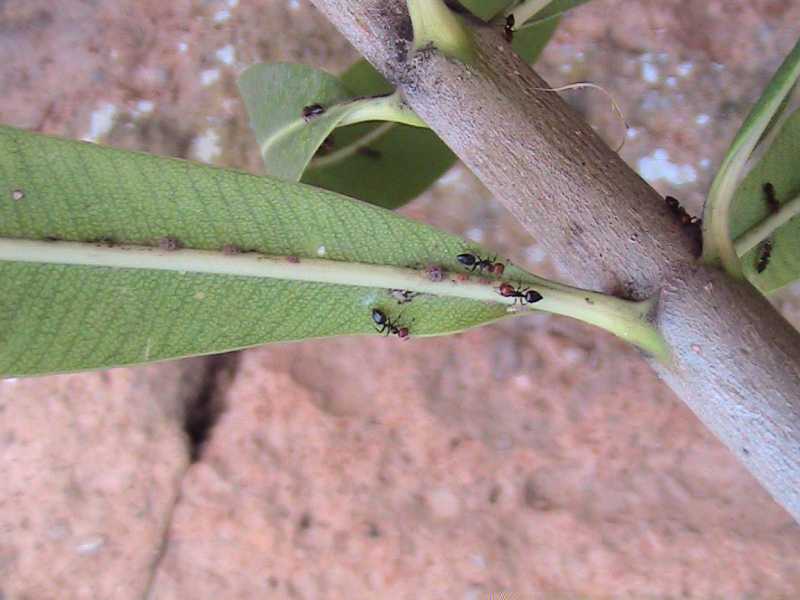 |
| Ants (Hymenoptera) collecting honeydew excreted by scale insects (Hemiptera) sucking plant sap from the midrib of an oleander leaves (Nerium) |
|
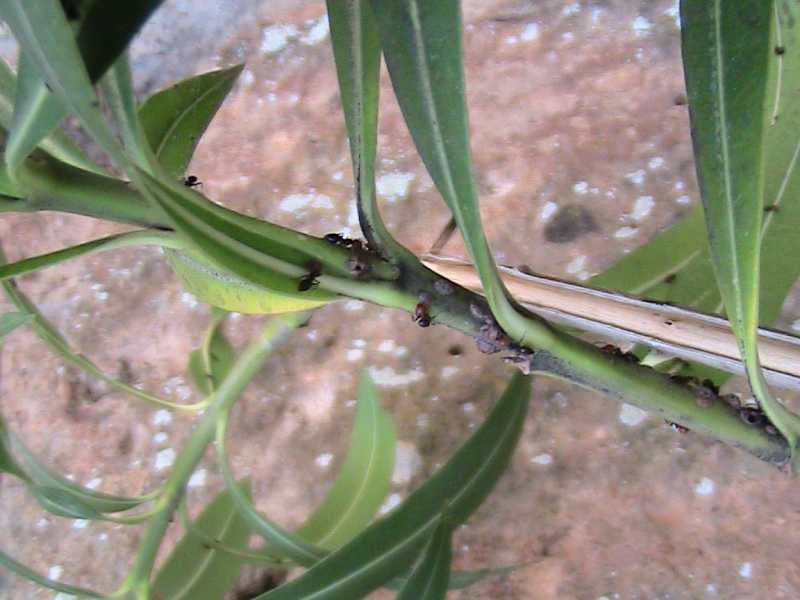 |
| Ants (Hymenoptera) collecting honeydew excreted by scale insects (Hemiptera) sucking plant sap from the tender stems of an oleander (Nerium) |
|
 |
| Ants (Hymenoptera) collecting honeydew excreted by scale insects (Hemiptera) sucking plant sap from the midrib of an oleander leaves (Nerium) |
|
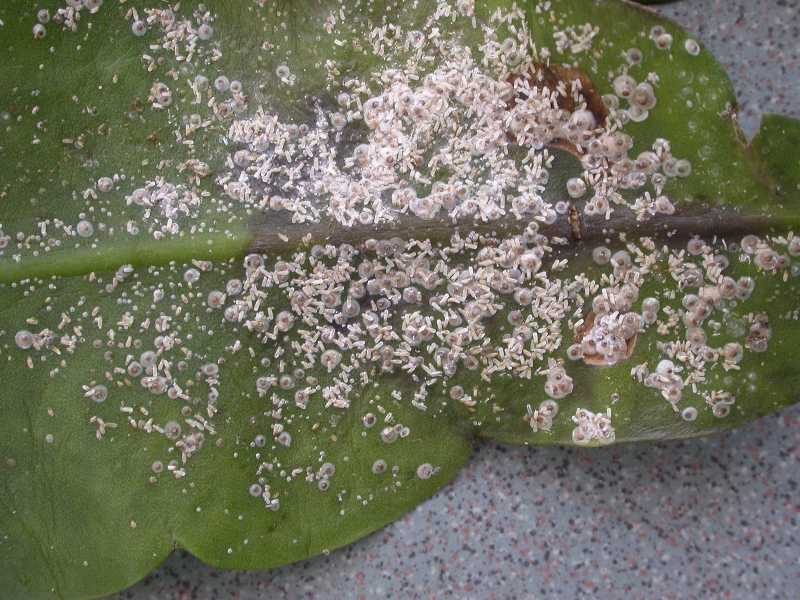 |
| Scale insects (Hemiptera) on night blooming cereus (Epiphyllum oxypetalum), also called, Dutchman's pipe cactus or Night Queen. |
|
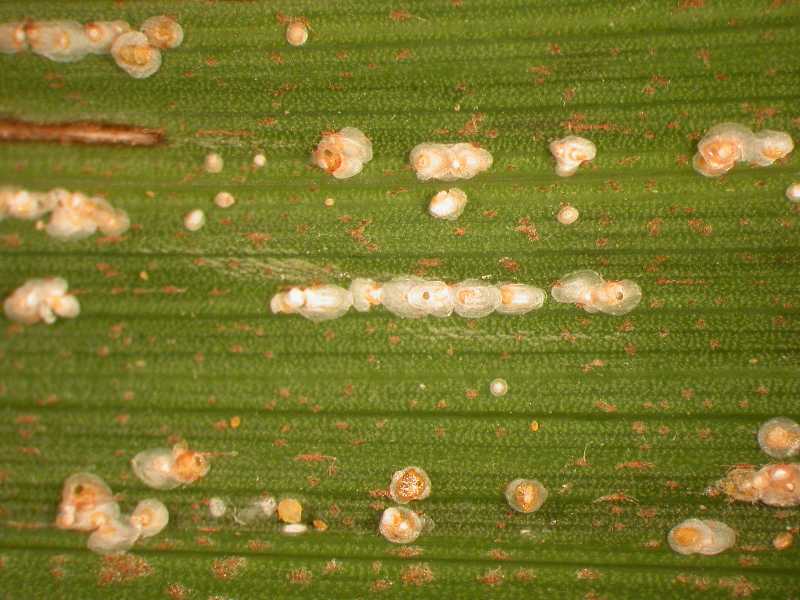 |
| Close-up of scale (Hemiptera) on frond of kentia palm (Howia) |
|
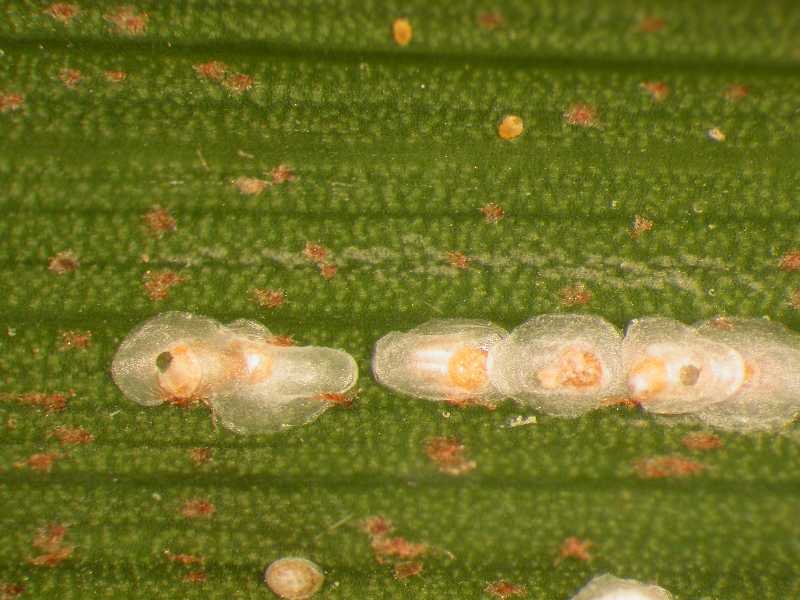 |
| Close-up of scale (Hemiptera) on frond of kentia palm (Howia) |
|
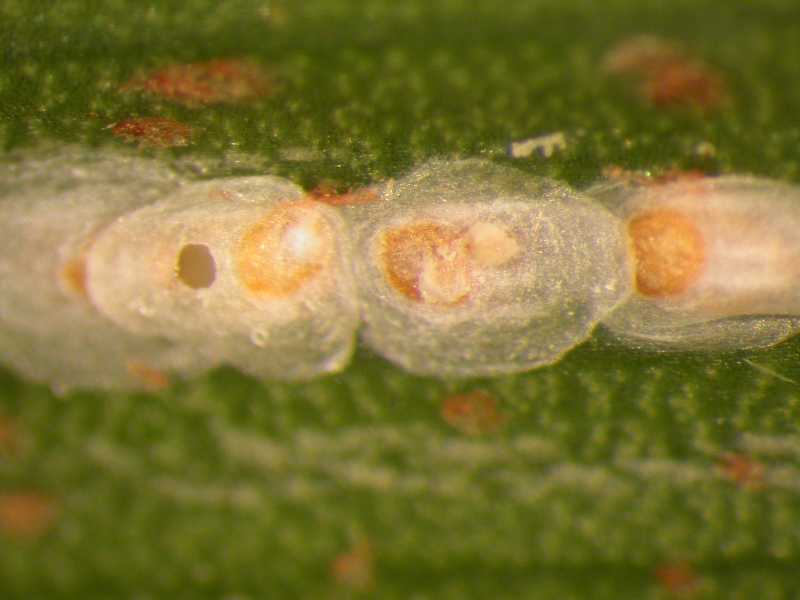 |
| Close-up of scale (Hemiptera) on frond of kentia palm (Howia) |
|
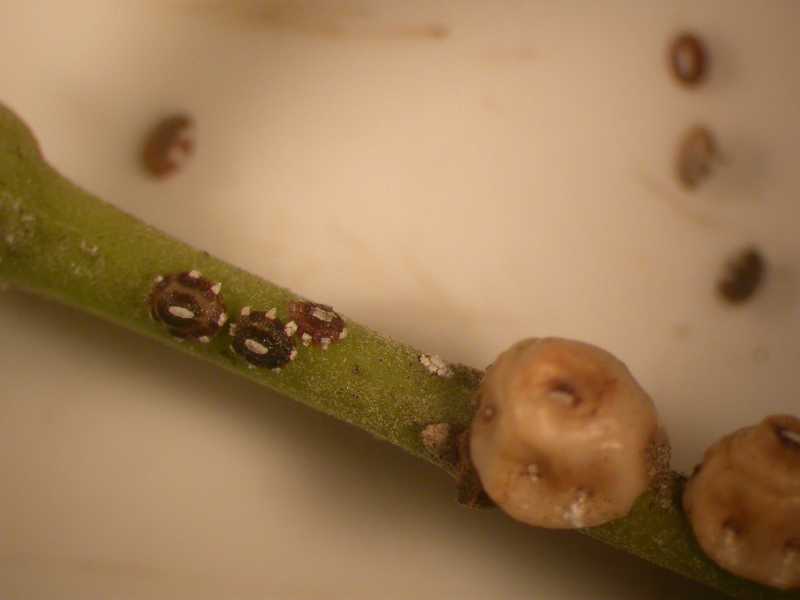 |
| Scale (Hemiptera) on stem of golden dew drop (Duranta erecta) |
|
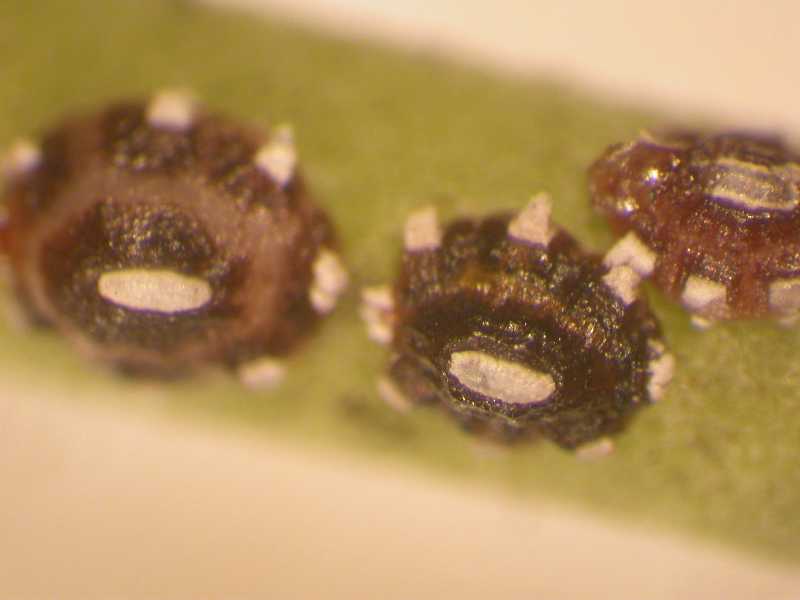 |
| Close-up of scale (Hemiptera) on stem of golden dew drop (Duranta erecta) |
|
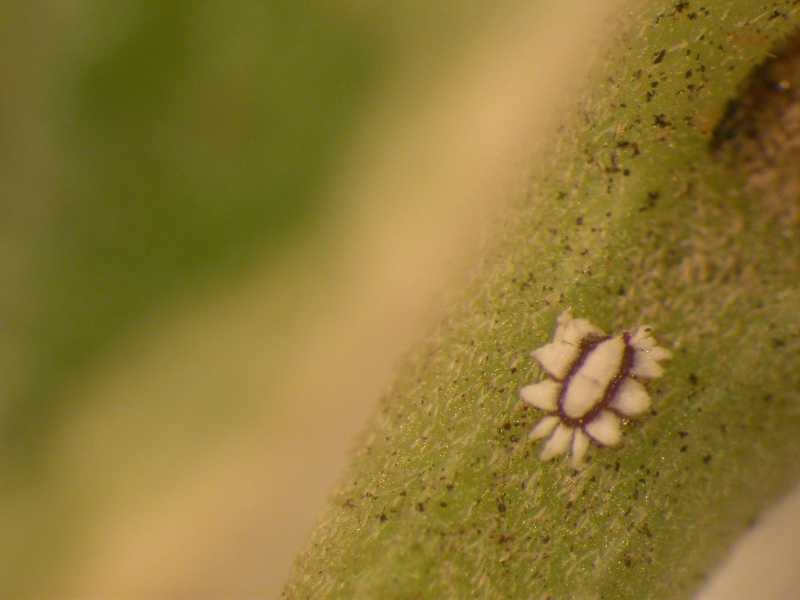 |
| Close-up of scale (Hemiptera) on stem of golden dew drop (Duranta erecta) |
|
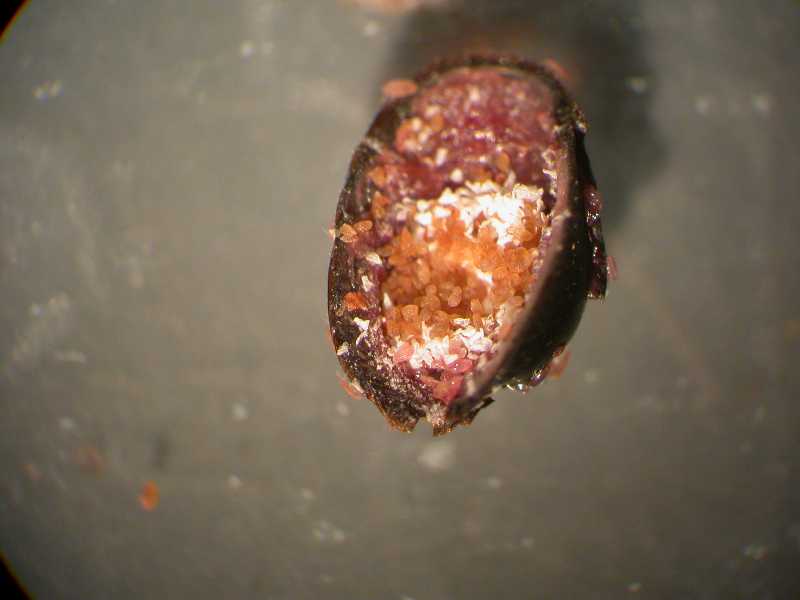 |
| Close-up of the underside of an adult scale (Hemiptera) with crawlers inside |
|
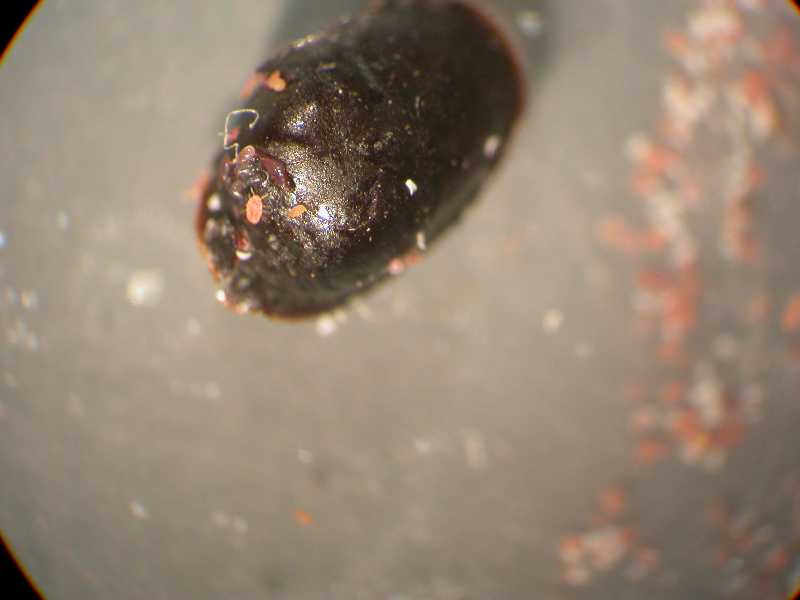 |
| Adult scale (Hemiptera) with crawlers |
|
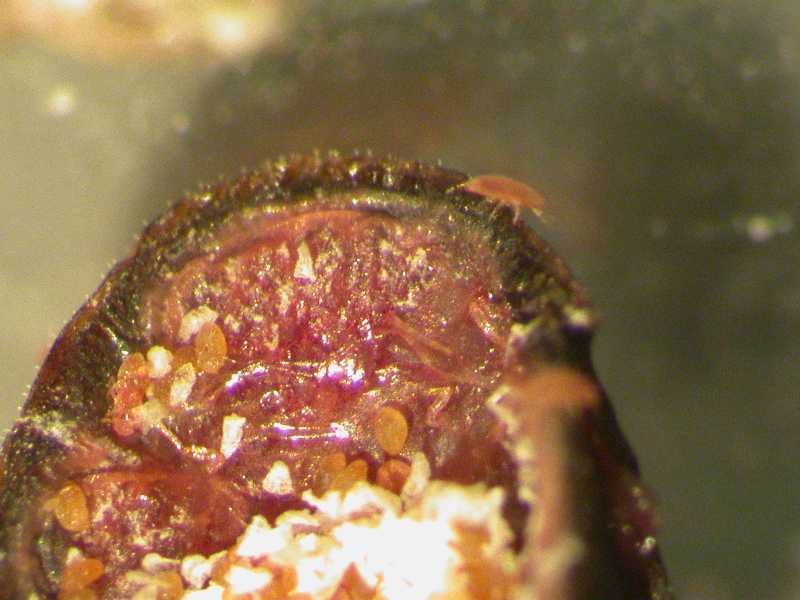 |
| Close-up of the underside of an adult scale (Hemiptera) with crawlers inside |
|
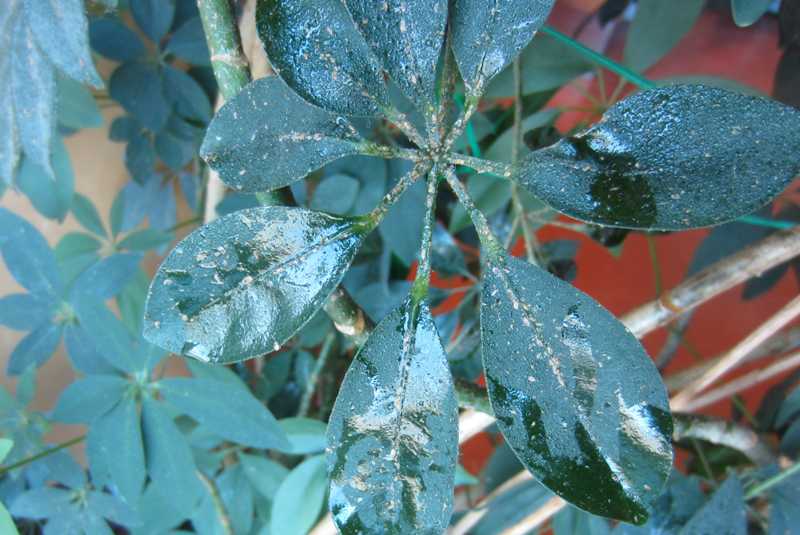
|
Heavy scale infestation (Hemiptera) on schefflera with a correspondingly copious amount of honeydew (shiny, sticky substance on leaflets).
|
|
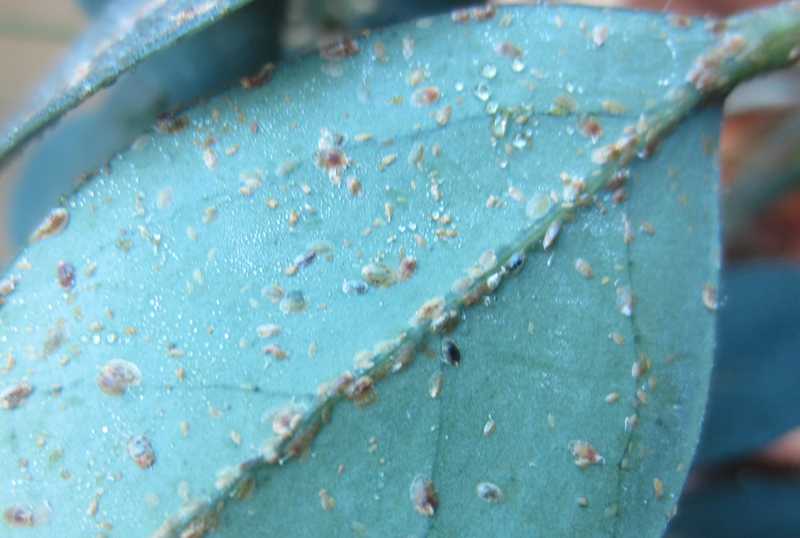 |
| Closer view of heavy scale infestation (Hemiptera) on underside of schefflera leaflet. |
|
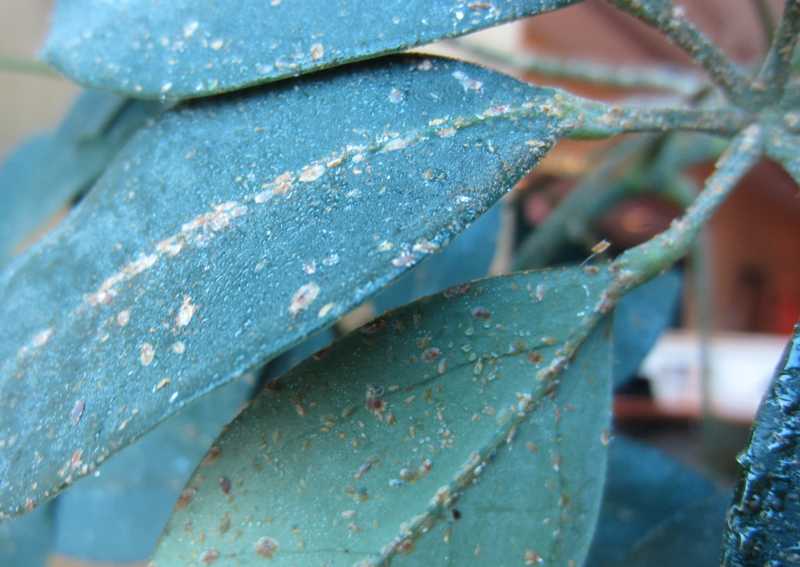 |
Heavy scale infestation (Hemiptera) on underside of schefflera leaflets and petioles.
|
|
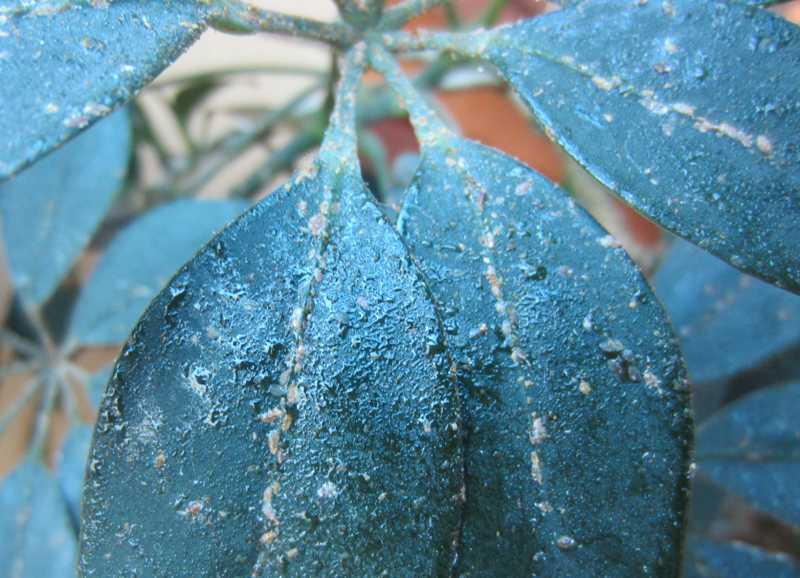 |
| Closer view of copious honeydew (shiny, sticky substance on leaflets) and heavy scale infestation (Hemiptera) on schefflera. |
|
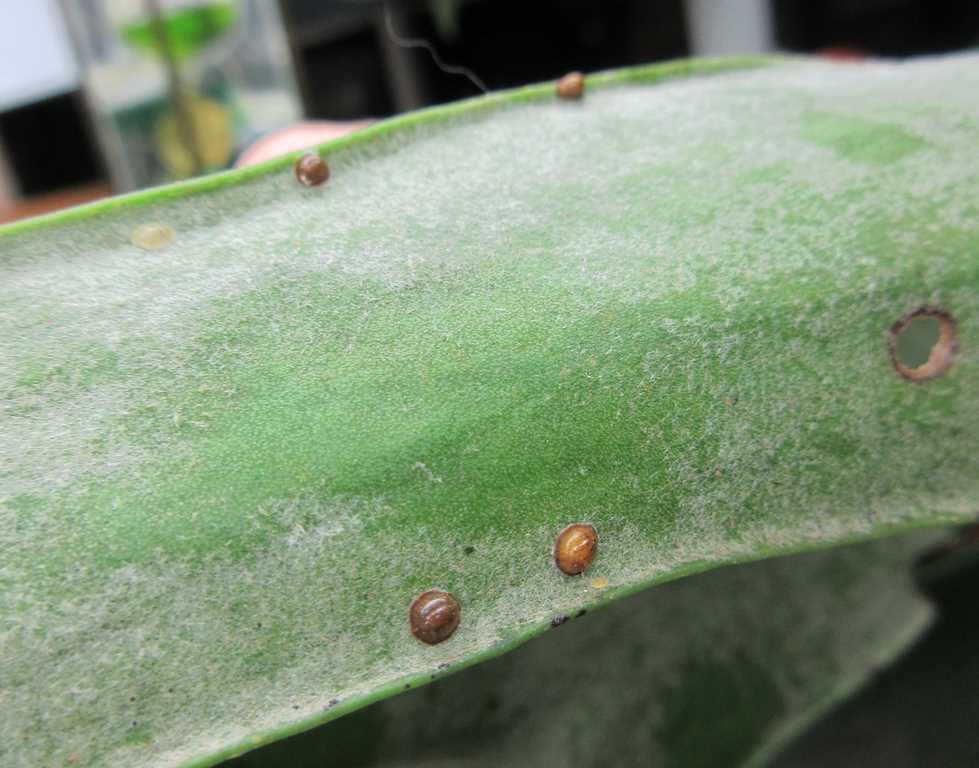 |
| Hard scale (Hemiptera) on an orchid leaf |
|
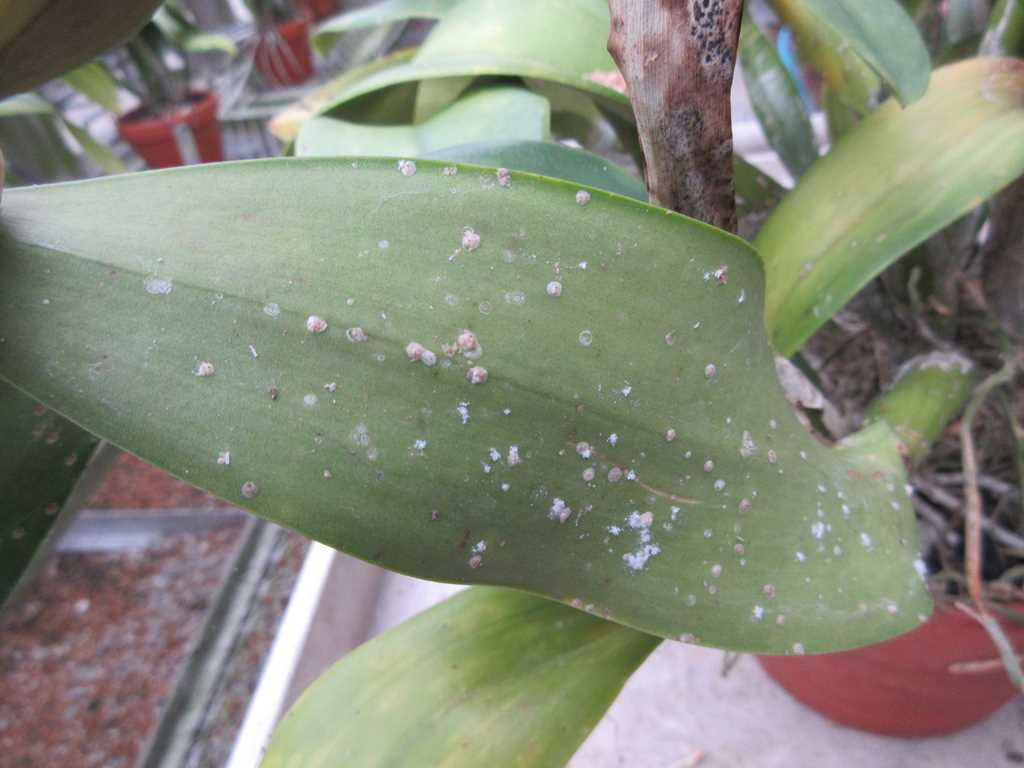 |
Boisduval scale (Hemiptera) on an orchid
|
|
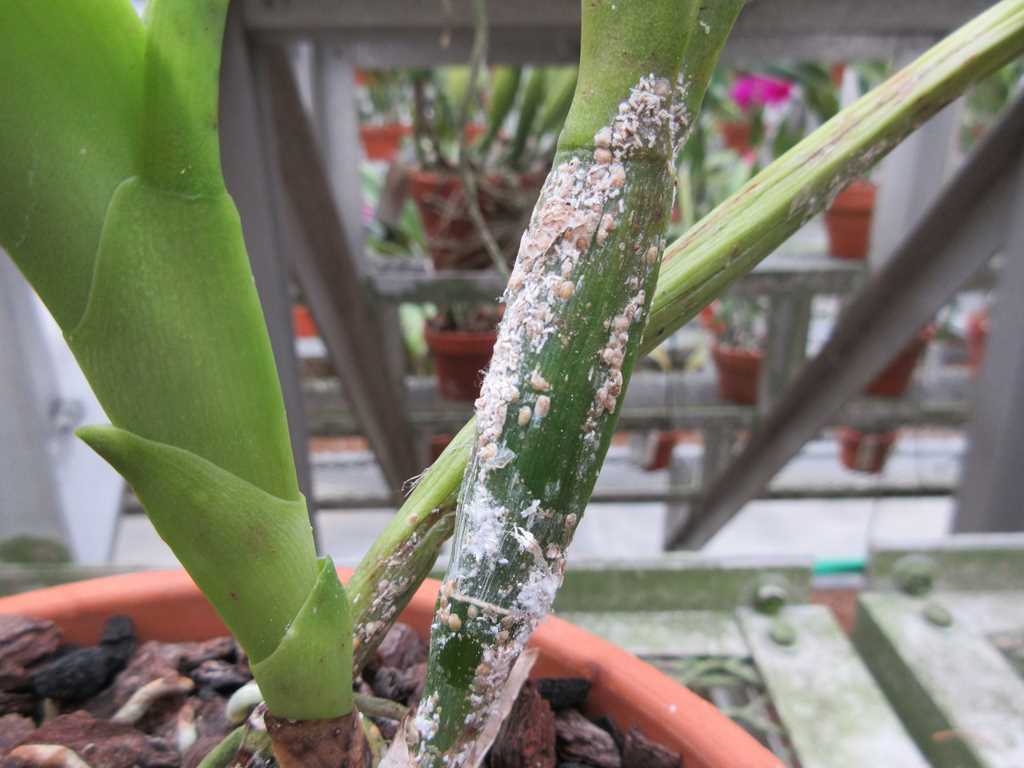 |
Boisduval scale (Hemiptera) on an orchid
|
|
 |
Hard scale (Hemiptera) on an orchid leaf
|
|
|